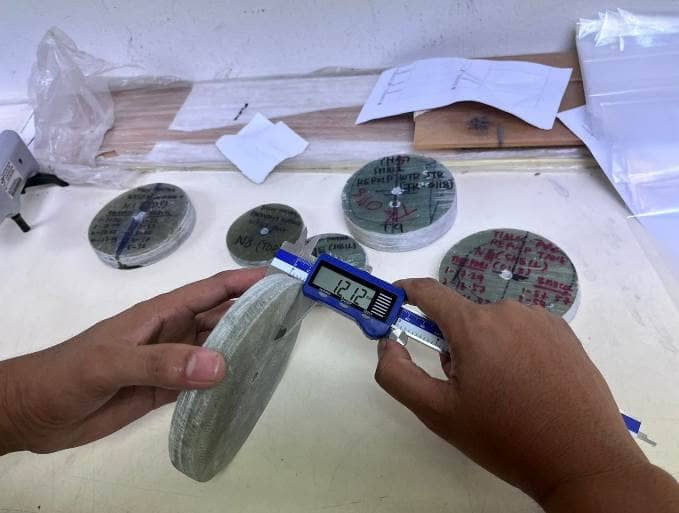The Crucial Role of Export Pre-Shipment Inspection in Global Trade
In the world of international trade, export pre-shipment inspection holds a significant position. It is a process that ensures the quality, compliance, and integrity of goods being exported before they leave the country of origin. Let’s delve deeper into the importance and various aspects of export pre-shipment inspection.
Export pre-shipment inspection begins with a meticulous examination of the goods. Inspectors carefully assess every detail, from the packaging to the product itself. They verify that the goods meet the specified standards and requirements, ensuring that they are in optimal condition for shipment. This detailed inspection gives exporters the confidence that their products will meet the expectations of the overseas buyers and comply with international regulations.
One of the key benefits of export pre-shipment inspection is the ability to detect and rectify any potential issues before the shipment. By identifying problems early on, exporters can take appropriate measures to address them. This could involve making necessary adjustments, replacing defective parts, or even reworking the products if needed. Preventing issues at the pre-shipment stage saves time, money, and avoids potential complications during the shipping process.

Furthermore, export pre-shipment inspection provides valuable documentation and reports. These reports detail the condition of the goods, any observed defects or deviations, and the overall quality assessment. This information is crucial for exporters to have on hand, as it serves as evidence of the goods’ quality and compliance. It can also be shared with the buyers or used for future reference, providing transparency and accountability throughout the export process.
Another significant advantage of export pre-shipment inspection is the mitigation of risks associated with exporting. It helps reduce the likelihood of encountering problems at the destination port, such as rejection of the goods or delays in customs clearance. By ensuring that the goods are in proper condition and comply with relevant regulations, exporters can minimize the risk of financial losses and disruptions to their business operations. This proactive approach allows them to manage risks effectively and safeguard their reputation in the global market.
Export pre-shipment inspection also plays a vital role in building trust between exporters and their overseas buyers. When buyers know that the goods have undergone a thorough inspection, they have greater confidence in the quality and reliability of the products. This trust is essential for maintaining long-term business relationships and ensuring repeat orders. It also enhances the exporter’s reputation and makes them more competitive in the international marketplace.
In addition to the above, export pre-shipment inspection can have an impact on the exporter’s bottom line. By identifying and addressing quality issues in advance, exporters can avoid costly returns, rejections, and warranty claims. This not only saves money in the short term but also improves the overall profitability of the export business. Moreover, a smooth export process facilitated by pre-shipment inspection can lead to faster payment and improved cash flow.
From a regulatory perspective, export pre-shipment inspection is often a requirement imposed by various countries and international trade agreements. Many countries have specific standards and regulations that exporters must comply with to ensure the safety and quality of the goods. By conducting a pre-shipment inspection, exporters can ensure that they are meeting these requirements, avoiding potential legal issues and penalties.
In the context of global supply chains, export pre-shipment inspection contributes to the overall efficiency and reliability of the supply chain. It helps coordinate the efforts of various stakeholders, such as manufacturers, exporters, and logistics providers. By ensuring that the goods are ready for shipment and meet the necessary standards, it reduces the potential for delays and disruptions, improving the overall performance of the supply chain.
In conclusion, export pre-shipment inspection is a critical aspect of international trade. It provides numerous benefits, including ensuring quality, detecting and rectifying issues, mitigating risks, building trust, and contributing to the financial success and regulatory compliance of the export business. As the global economy continues to evolve, the importance of export pre-shipment inspection will only continue to grow. Exporters must recognize the value of this process and make it an integral part of their export strategy to remain competitive and successful in the international marketplace.
What are your thoughts on export pre-shipment inspection? Share your experiences or perspectives in the comments below.
Learn more Successful Arctic module fabrication, Export pre-shipment inspection, steel structure, modular and skid, steelwork, supplier audit, DNV Class, Oil & Gas, welding supervisor, welding quality inspection, CWI CSWIP welding inspector, pump and pipe, stainless steel fabrication and CNAS ISO 17025 9712 NDT NDE practice via below-
https://www.jsc-safe.com/steel-structures-modules-machining/
